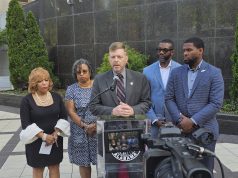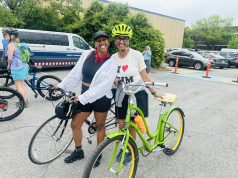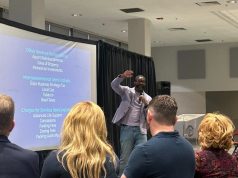By Alicia Rohan
UAB News
As the Deep South sees a surge in cases of the novel coronavirus, COVID-19, experts from the University of Alabama at Birmingham have created a symptom checker to identify hot spots where the virus is spreading. The new website, HelpBeatCOVID19.org, will provide public health officials insight into underserved areas based on the symptomatic data collected from the region and could help inform and enhance public health observation.
“We are taking a look at COVID-19 symptoms alongside underlying medical conditions to provide public health officials an in-depth analysis of how rural areas are affected in real time,” said Sue Feldman, Ph.D., associate professor in the UAB School of Health Professions and UAB School of Medicine. “The website asks people about their symptoms to produce an interactive map showing how areas are effected and hot spots that are showing a rise in symptoms. We hope to learn more about how coronavirus is spreading in rural communities who have health disparities so we can help fight the spread of the disease.”
HelpBeatCOVID19 will help public health officials and health care workers track symptoms before the disease spreads by encouraging people to take a daily survey about their symptoms. The symptom tracker will provide up-to-date information that tracks the progression of symptoms in communities in real time.
“During this devastating disease outbreak, we cannot ignore anyone, any population, any demographic,” said Mohanraj Thirumalai, Ph.D., assistant professor in the UAB School of Health Professions. “HelpBeatCOVID19 gives everyone a voice and a chance to contribute to a new way of reporting symptoms that is specifically designed for the rural communities who are often without the resources of those who live closer to urban areas.”
Log symptoms daily
People can visit the website daily to report their symptoms based on if they are feeling well or experiencing symptoms related to the novel coronavirus. The questionnaire takes about three to five minutes to fill out based on how someone is feeling. There is a series of questions addressing how one feels that day, current symptoms, other existing health conditions and basic social factors.
“As people present more symptoms in these communities, public health officials will be able to look at populations in specific ZIP codes, gaining timely information to help identify priorities during the course of the COVID-19 outbreak,” said Sarah Parcak, Ph.D., professor in the UAB College of Arts and Sciences. “This information will fill a void in coronavirus reporting and be of great value to help lessen the threat to public health in the Southeast. The new tool could help identify new community outbreaks more effectively taking into account all aspects of lives of the people in that community.”
While following respiratory illnesses such as COVID-19 and SARS has traditionally focused primarily on movement of people and the biological spread of the virus, HelpBeatCOVID19 includes an additional focus beyond symptoms and health to other contributing factors. This includes social factors, such as neighborhood characteristics, economic factors and others, that may become key in understanding and acting upon information gathered from the questionnaire. In particular, such information can help us understand disparities in COVID-19 spread and eventual outcomes.
HelpBeatCOVID19 is a multi-channel geographical symptom tracker platform driven by crowdsourced, consumer-generated data collection that is inclusive and representative. The inclusive system focuses on health and wellness tracking across the Southeast, with an emphasis on underserved communities and underrepresented populations.
The symptom tracker is being used for surveillance that provides foundational data for future research about COVID-19 spread. The geospatial information used to provide the surveillance was put together by a team of collaborators from UAB in 10 days, a project that would have taken eight to 10 months in normal circumstances. The project is led by Parcak, Feldman and Thirumalai with support from UAB’s Center for Clinical and Translational Science, College of Arts and Sciences, Minority Health and Health Disparities Research Center, School of Medicine, School of Health Professions, School of Public Health, and the UAB/Lakeshore Research Collaborative.
COVID-19 is on the rise in the Southeast. UAB is tracking symptoms to identify hot spots. Help @UABNews help you by reporting your symptoms daily: HelpBeatCOVID19.org.
Click one of the links below to read more COVID-19 related stories.
Mark E. Wilson, Jefferson County’s Top Doc, On Reducing The Coronavirus
Meet the Local Health Specialists in Fight Against COVID-19
Jeffco Extends Closure of Courthouses, Allocates $1M to Coronavirus Relief
Cooper Green Mercy adds telehealth services during COVID-19
What PPE donations UAB is accepting and new collection processes
UAB will test a COVID-19 vaccine candidate created by Altimmune Inc.
Alabama tightens public restrictions to slow spread of COVID-19
CAP to continue downtown Birmingham patrol with COVID-19 shelter in place




